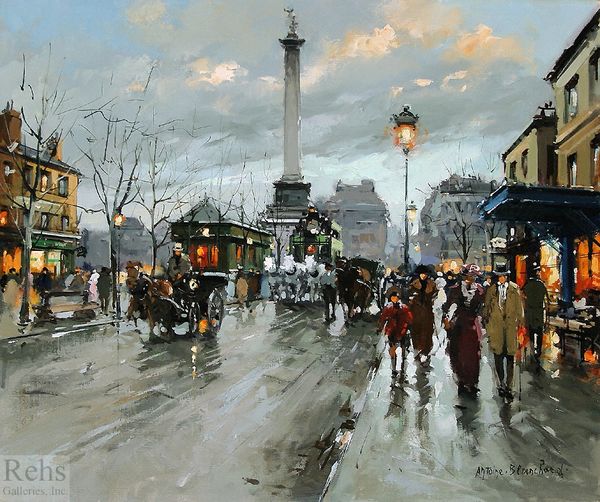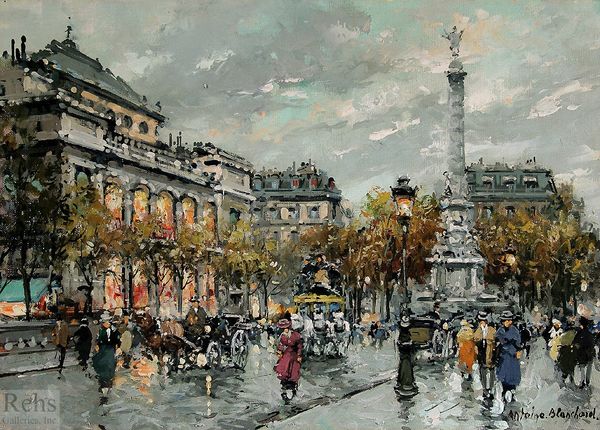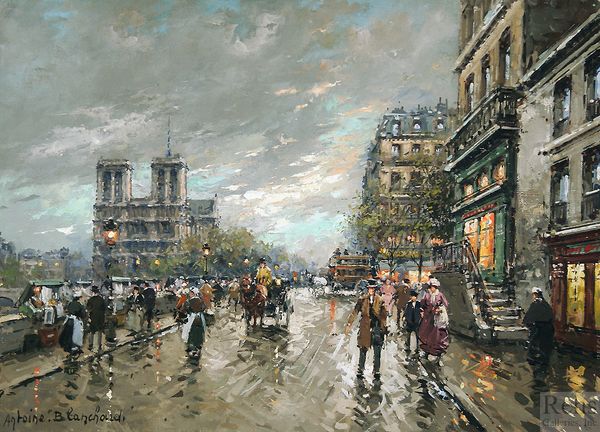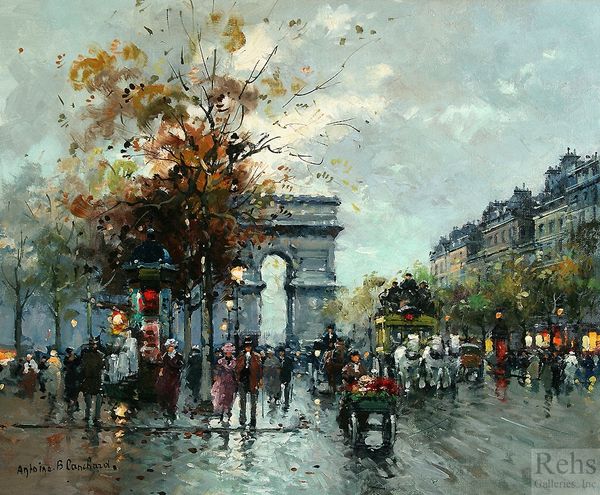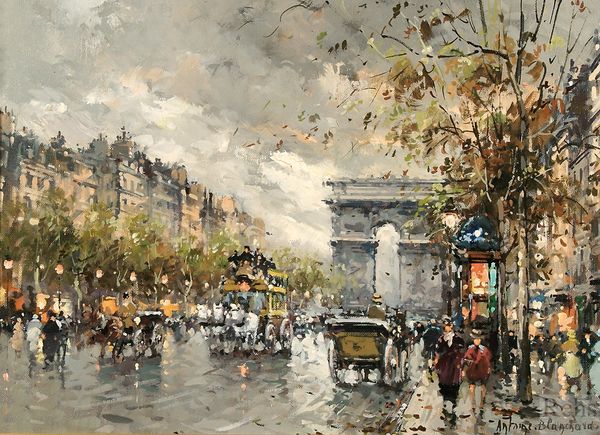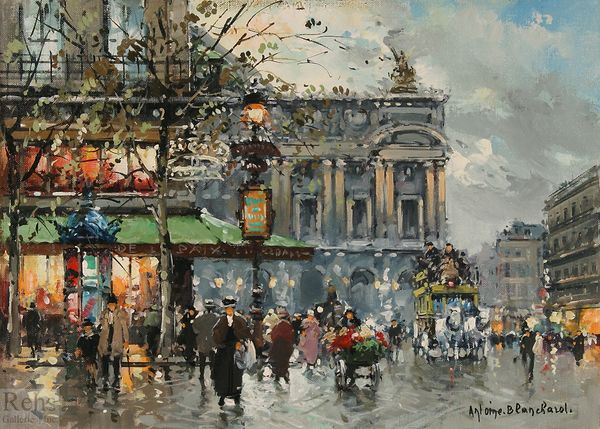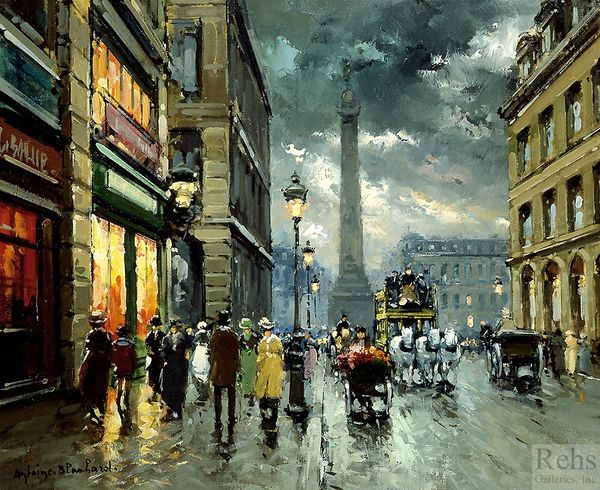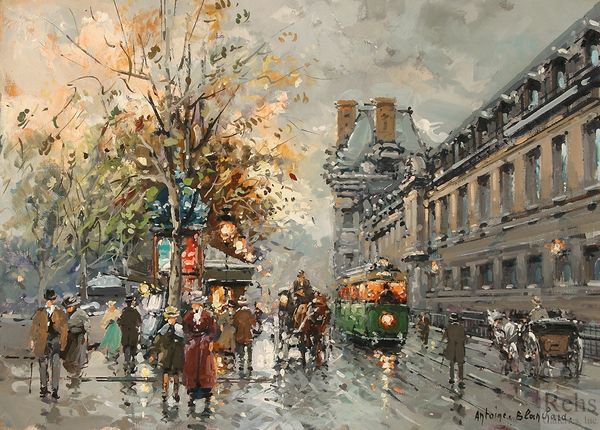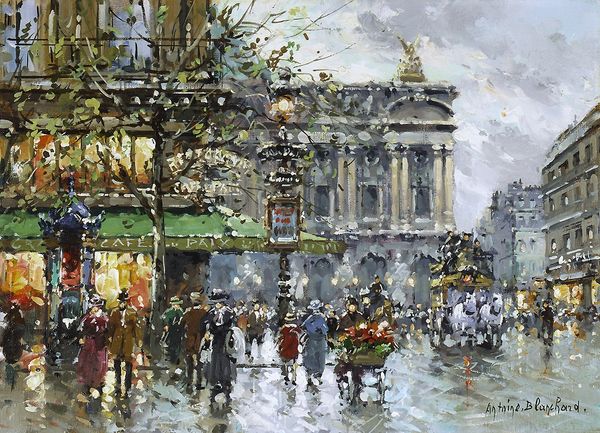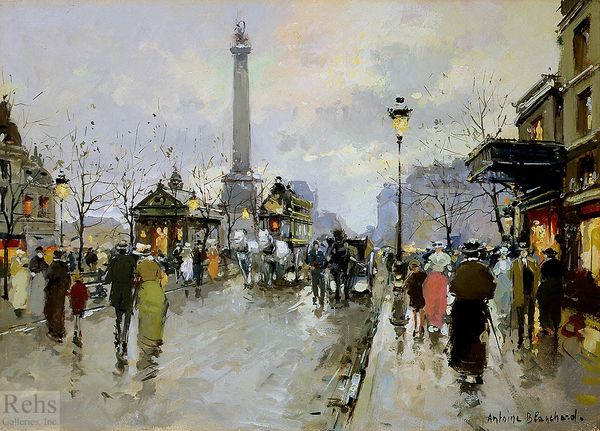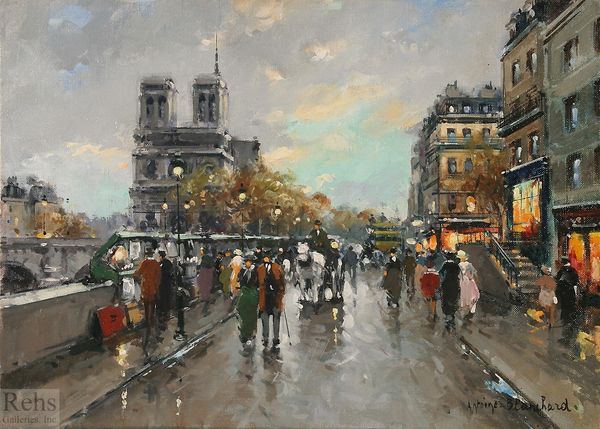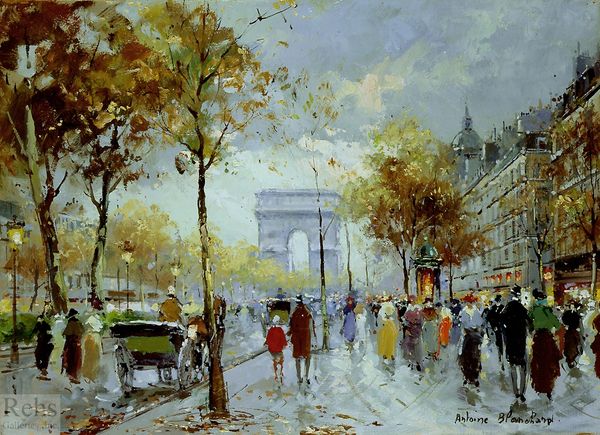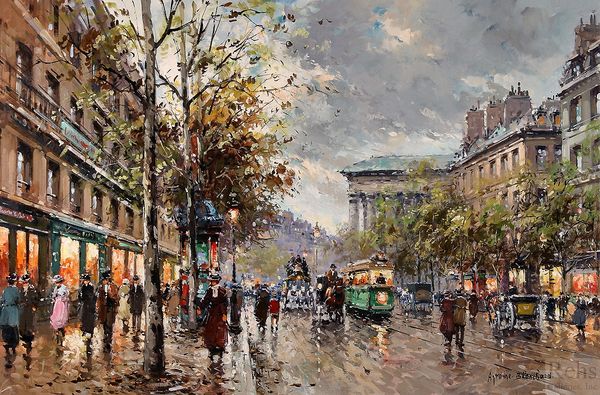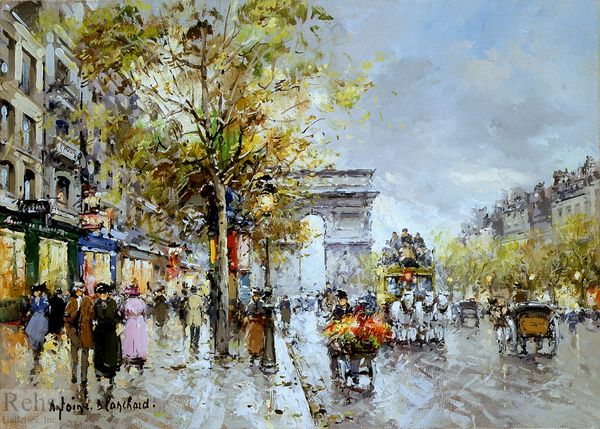
painting, plein-air, oil-paint, impasto
#
narrative-art
#
painting
#
impressionism
#
plein-air
#
oil-paint
#
figuration
#
oil painting
#
impasto
#
cityscape
Copyright: Antoine Blanchard,Fair Use
Curator: Standing before us is "Place de la Bastille," a cityscape by Antoine Blanchard. Editor: My immediate reaction is melancholic. The muted greys and browns create a somber mood, reflecting a particular historical feeling of the location as much as capturing a moment in time. The dampness of the street, and reflections only reinforce the stillness and silence that underlie this seemingly bustling tableau. Curator: Indeed, Blanchard, an artist working in the 20th century, repeatedly depicted Parisian street scenes, often echoing the Belle Époque. Considering the weight of the Bastille's history—the storming of the prison during the French Revolution—does the location itself amplify a sense of social or political quietude? Editor: Absolutely. The column in the background is heavy with symbolism. Visually, the towering column acts almost as a stand-in for a collective desire for freedom, though perhaps an unrealized potential; but beyond the figures milling in the square, the feeling is more funereal, reflecting something incomplete or unresolved in the wake of the Revolution. It almost feels like an elegy to a failed utopian impulse. Curator: An interesting reading, focusing on a specific reading of historical context, while considering collective memory and how this may play tricks through nostalgic or hopeful narratives that often overshadow or mitigate historical facts, specifically considering the events in that location. Do you think Blanchard was subtly commenting on this through his choices in light and composition? Editor: Undoubtedly. Light often denotes understanding, awareness, or even hope. Look how diffused it is. In particular, notice the column in the background -- an upward-pointing monument which may or may not symbolize freedom. So what happens when it disappears, however minimally? I would consider what exactly may or may not be lost. Blanchard uses his art not to reflect things how they may have been but rather how they *should* be -- an art meant to question social structures of oppression which, while never invisible, hide in plain sight. Curator: So the visual symbolism reveals a deeper interrogation of history and memory itself, a critical examination. What began for you as somber, has uncovered a quiet revolution in process... Editor: Precisely. Curator: I see it, now!
Comments
No comments
Be the first to comment and join the conversation on the ultimate creative platform.
